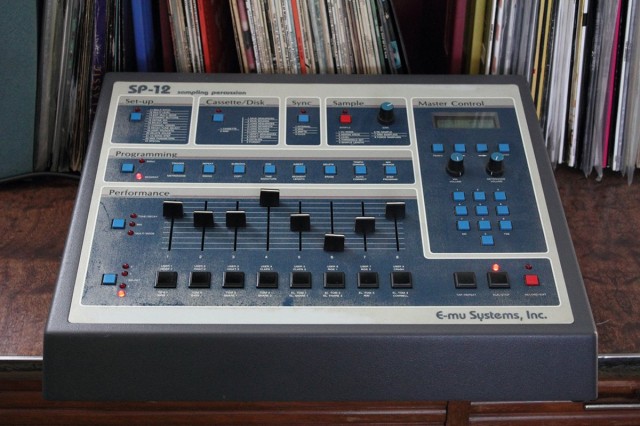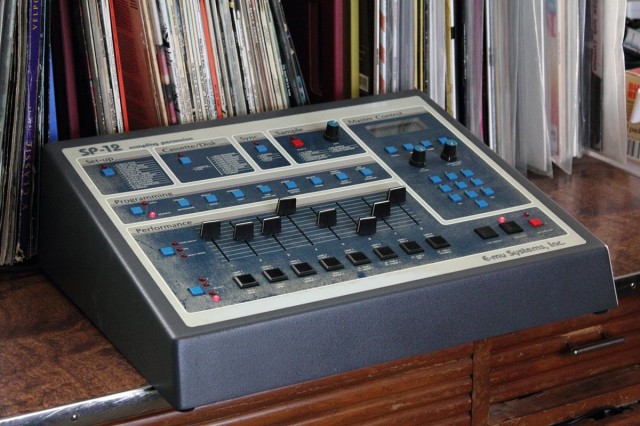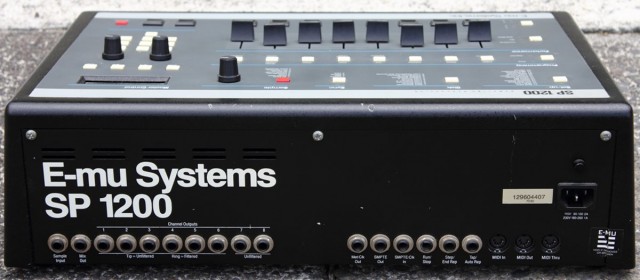Call it future shock. Love of retro gear is more than nostalgia; sometimes it takes time to appreciate what technology means. And so, today, classic digital samplers and drum machines like the E-mu SP-1200 and SP-12 can inspire even greater passion than they did when new. Today, producers can feel love not only for retro analog, but retro digital.
With plenty of 12-bit digital dirt, the original SP samplers sound gritty, warm, and unique. And one of my favorite samplists, Hugo of Gold Baby Productions, does a nice job of capturing that personality – enough for me to take note of a soundware set, which is something I tend not to do often on this site.
You can grab the second volume of SP-12 and SP-1200 samples for US$29, but Hugo also has a free holiday gift: over a hundred 24-bit samples from the SP-1200, none of which is in the paid version, have been added to the various nice free stuff on offer on his site:
http://www.goldbaby.co.nz/freestuff.html
Hugo talks to CDM a bit about sampling vintage equipment, good fodder for inspiration if you’re thinking of taking up a similar project yourself. (It’s a great way to spend the winter months, I think, fellow residents of the Northern Hemisphere.)
To start with, I have an extensive collection of drum machines, real drums, and percussion, all recorded by me over the last 20 years. I took a selection of these and got a Dubplate made. I also re-recorded some of them to tape. This made it easy to recreate one the SP’s more famous tricks — pitching down to get aliasing. The Dubplate was pressed at 33 rpm then played back at 45 rpm, then sampled and tuned down on the SP. Hello, aliasing! I used the same process on tape. I could have done this using pitch software via the computer, but that is not the Goldbaby way!
Back in the day, this trick was not originally done for sonic reasons. With a sampler only having limited sampling time, it was a ghetto way to get more [recording time]! So, with the analog filters and the 12-bit, 26.4 kHz sampling engine, you get both grit and warmth!
Another trick with old hardware samples is experimenting with how hard you hit the sampling input. For instance, snares sound great if you hit the input really hard. It kind of acts like tape and squashes the transient; it gives them punch. A high hat can sound grittier if you sample them at a very low level — it kind of works like bit reduction. Also, using threshold record triggering can help give a drum a sharper attack. It basically is a function where you select a threshold level for the sampler to start sampling.
Whatever you do, don’t read the sampler manual! All the advice they give is for getting clean-sounding drums.
I also did a few recording sessions with some newly-acquired percussion and drums.
I went through some of my old synth product audio demos and and sampled them also. I wanted to get that ‘sampled from a Moog concept album’ sound!
I also have a portable recorder I carry everywhere at all times. My field recording folder is a great place to dig for new sound ideas. I used a few in this product — check out Drum_Festival1_SP1200R.wav. The world is filed with sound…
So two months of doing this gets you about 1500 samples.
I think DRTFM (don’t read the f***ing manual) could be a new watchcry. Some sound samples:
All photos courtesy Hugo at Goldbaby; used by permission. (Is anyone aside from me impressed with how modern the panel designs look on the E-mu? I think we need an alternate MeeBlip case that looks like this – our plastic housing is the same shape as the SP-12. Any takers?)
Got vintage gear you like to use? Found inspiration for modern digital techniques from equipment from the past? Let us know in comments.
Side note: a project inspired by digital samplers of yesteryear worth mentioning here is the open-source Where’s the Party At. (It’s an 8-bit sampler, though; the E-MU would be easy enough to ape in a Max or Pd patch if you wanted to use the retro hardware as a jumping-off point.)


